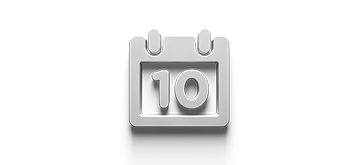Applications and Implications
Assigment objetive:
Propose a final project that integrates the range of units covered
1.- What will I do?
Bits and Atoms Pen
We could understand this object as an ANALOG AND DIGITAL PEN that joins the analog world with digital world to transform Atoms or Actions to Bits and Bits to Actions or Atoms. Is a pen that transforms your draws to G code in order to connect you to every digital fabrication machines that you what to use, giving up the power to control them naturally (without CAD programs).
A short example could happen when you want to carve your signature in a sheet of metal. With a normal pen is impossible to remove or carve a piece of metal because the pen and your hand are not enough hard to do it. But with BAP your signature will transformed in G code and a machine (CNC milling) would follow your movements and carve that sheet of metal easily.
2.- Who’s done what beforehand?
I found some examples of products that has some similarities with BAP but they have not the Spatial Drawer function or something to draw in 3D.
After finishing Bits and atoms pen I have found an interesting paper that explaned great the theory about the principles of this proyect.
3.- What materials and components will be required?
1
Acelerometer 12LGA
LSM303CTR
1
Bluetooth Module Tiwi-UB2
450-0104
1
Led Blue Clear 1206 REV MT SMD
LTST-C230TBKT
1
Led White Yellow 260MCD 1206
LTW-150TK
2
Bottom OMRON SWITCH
5
Maxell LR44 ALKALINE 1.5V
1
USB 2.0 BSMT H/D
DX4R005HJ5R2000
1 Gyroscope MEMES 3-AXIS 16LGA
L3G4200D
4.- Where will they come from?
Electronics - China
Plstic filment - Southamerica
Enegy supply - Southamerica
5.- How much will it cost?
$30
6.- What parts and systems will be made?
1. circuit board
2. ergonomic design for 2D and 3D drawing
3. pen structure
4. embedded program
5. executable program
7.- What processes will be used?
1. CNC milling machining
2. Computer aided design
3. 3D print, molding and casting
4. Embedded programing
5. Interface
8.- What tasks need to be completed?
1. Research how the idea will work
2. Make hardware work
2.1. Run the MPU 6050 sensor program and get data using arduino
2.2. Design and make the pens in-circuit board to replace the arduino.
2.3. Test if it works
2.4. Add a Bluetooth module
2.5. Test it
2.6. Replace the MPU 6050 sensor by add a new in-circuit board module to the main board.
2.7. Test the system
3. Make software work
3.1. Find programs that would help you to understand what you have to do
3.1.1. MPU 6050 arduino program
3.1.2. MPU 6050 filter program
3.1.3. Acceleration to position program transformer
3.2. Join all that programs
3.2.1. Be clear in the idea
3.2.2. Get some help
3.2.3. Write the program
3.3. Taste it
4. Make it wonderful
4.1. Apply Bits and Atoms concept to the product
4.2. Make a great explanation
9.- What questions need to be answered?
How analog pens are made?
How digital pens are made?
How could I generate data with a pen?
How could I make a vector with that data?
How the information that I have learned would apply to what I’m doing?
10.- What is the schedule?

11.- How will it be evaluated?
The main issue when you make an idea real is how near have you got from it. I mean that the most important issue for me as a designer is how equal I got my project for the first idea. And I make changes to get a better result rather make it easier for my capacities and abilities. Then I look about the concept, function, ergonomics and functionality. I think that I will be evaluated about that principles.


